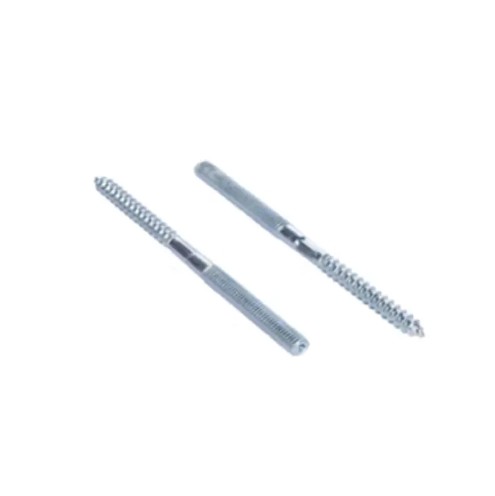Pan Head Self-Drilling Screws
Cat:Self Drilling Screws
Pan Head Self-Drilling Screws are a type of fastener widely used in construction...
See DetailsHigh-strength material: the core of improved bolt performance
Traditional bolts mainly use carbon steel or stainless steel materials, but with the increase in demand for industrial applications, the limitations of these materials in terms of strength, corrosion resistance, etc. are gradually emerging. To this end, more advanced high-strength materials have been introduced into the industry.

1. Application of high-strength alloy steel
High-strength alloy steel is a star material currently in Bolt manufacturing. By adding alloy elements such as molybdenum and chromium to the steel, the tensile strength and toughness of the bolts have been significantly improved. Especially in high load and dynamic environments, high-strength alloy steel bolts far outperform traditional products.
2. The rise of lightweight materials
In order to meet the needs of fields such as aerospace and new energy vehicles, lightweight materials such as titanium alloys and aluminum alloys have gradually become popular choices for bolt manufacturing. These materials not only greatly reduce weight, but also have excellent corrosion resistance and high strength, perfectly adapting to harsh working environments.
3. Breakthrough in composite materials
Composite materials, especially carbon fiber reinforced plastics (CFRP), have increasingly broad application prospects in bolt manufacturing. Although composite bolts are still in the exploration stage, their high specific strength and chemical corrosion resistance provide new possibilities for specific scenarios.
New manufacturing technology: promoting the development of the bolt industry
In addition to material upgrades, the advancement of manufacturing processes is also the key to improving Bolt performance. Modern process technology optimizes bolt production from multiple dimensions such as accuracy, efficiency to environmental protection.
1. High-precision cold forging technology
Cold forging process is one of the core technologies in bolt manufacturing. By improving the mold design and processing accuracy, cold forging not only improves the surface quality and structural strength of the bolts, but also achieves low energy consumption and high efficiency production.
2. Upgrading of heat treatment process
Advanced heat treatment technologies, such as vacuum heat treatment and ion nitriding processes, perform excellently in improving bolt wear resistance and fatigue resistance. These techniques can more evenly change the internal structure of the material, making the bolts more stable under high stress environments.
3. Innovation in surface treatment technology
Surface treatment technology directly determines Bolt's corrosion resistance and service life. For example, the corrosion resistance of bolts using nanocoating technology in extreme environments has been greatly improved, while the electro-galvanized aluminum alloy coating has both high hardness and anti-rust functions.
4. The introduction of additive manufacturing (3D printing)
Additive manufacturing technology is gradually penetrating into the bolt industry. Manufacturing bolts with complex structures through 3D printing not only saves raw materials, but also customizes products according to special needs, paving the way for future personalized manufacturing.
Industry impact of technology upgrade
1. Meet more demanding application requirements
The combination of high-strength materials and new processes enables Bolt to perform outstandingly in extreme temperatures, high loads and corrosion environments. For example, the application requirements of high-performance bolts in the fields of marine engineering, deep space exploration, etc. have been effectively met.
2. Cost and performance balance
Although advanced materials and processes increase production costs, the high reliability and low maintenance requirements of these bolts can significantly reduce usage costs and create higher value for users over the entire life cycle.
3. Promote the upgrading of industry standards
With the advancement of technology, relevant industry standards are constantly being updated. For example, the tensile strength, fatigue performance and other indicators of high-strength bolts have been further clarified, which also sets a higher threshold for industry competition.
4. Help sustainable development
Environmental protection and sustainability are important themes of modern industrial development. Through the adoption of low-carbon materials and environmentally friendly manufacturing processes, the bolt industry has also made important contributions to reducing carbon emissions and resource consumption.
Future development trends
In the future, the Bolt industry will continue to explore in-depth research and development of new materials and intelligent manufacturing. For example, the introduction of nanomaterials and self-healing coatings may further improve the performance of bolts; while intelligent manufacturing technology based on big data analysis will achieve full process optimization from design to production.